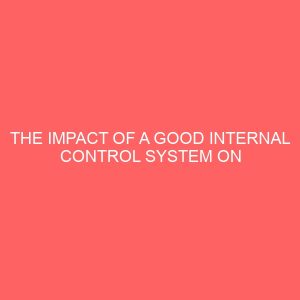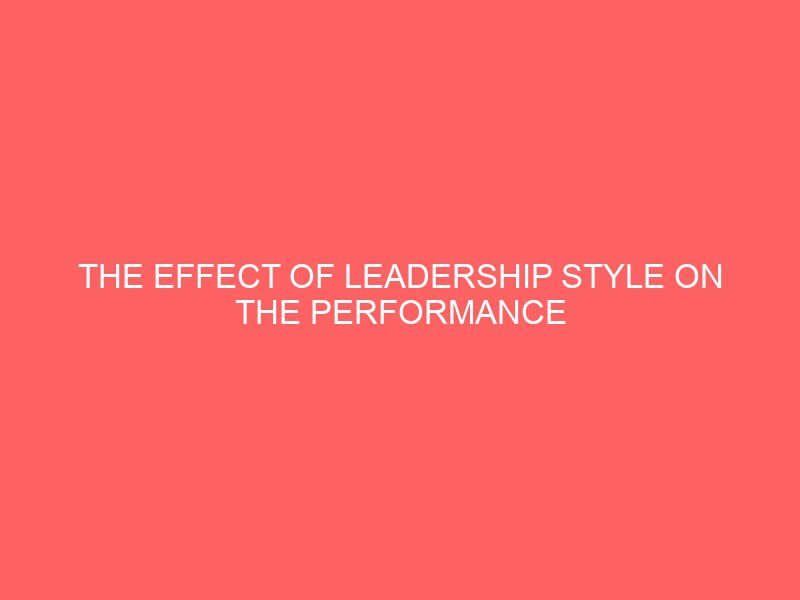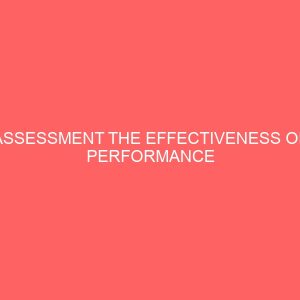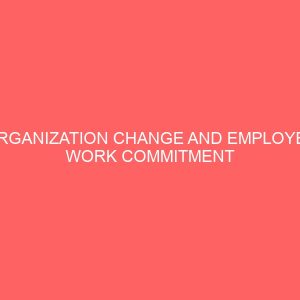Description
CHAPTER ONE
INTRODUCTION
1.1 Background To The Study
The issue of leadership is very topical in the literature of social and management science. This has attracted the hottest of business mortal techno rate finance export manager and chief executive in the business world to contribute through professional discussions, workshop conference to the issue of leadership.
Leadership styles have diverse effect on variable such as flexibility standards, rewards, clarity and commitment and in some cases on organization climates as the behavior of the leader produce motivation mechanisms which have effect on the conduct of individuals in the business organization (Shamir, 2006). The essence of leadership is fellowship, effective leadership is the extent to which a leader constantly and progressively lead and directs his or her followers, towards organization business.
However, swift change in the business environment, organizational structures, technology and life styles are introducing a considerable rethinking of leadership development. Leadership concerns the ability to influence the behavior of others to move accord with the desire of the leader and pursuit of goals.
Against this background, this study is designed to investigate the effect of leadership style on worker’s productivity.
1.2 Statement Of The Problems
The problem with most business organization is that the leaders are not democratic in their relationship with their subordinate. In fact leaders in most business enterprises are usually authoritarian in style. They dictate the tune and have the administration of the organization centered on them. The need for subordinate to participate in decision making is not a passing fancy.
Another problem affecting leadership style in business organization is the competence of the leaders to be appointed. In most cases, some of their appointed lack merit. What becomes of such organization is having competent leaders who lack the abilities or capacities to use the appropriate leadership style to lead the members to attain set goals or objectives.
1.3 Research Questions
As clause to finding solution to the above problem, the following question has been raised.
1. To what extent is the effect of leadership style on management of business organization?
2. To what extent is the relationship between leadership style and employees moral in business organization?
3. To what extent does leadership style enhances employees’ efficiency in business organization?
4. Is there a relationship between the management leadership style and employees commitment in business organization?
1.4 Objectives of the Study
The main objective is to examine the effect of leadership style on the performance of business organization. Other specific objective includes:
1. To examine the effect of leadership style on employees moral in business organization.
2. To examine the effect of leadership style on employees efficiency in business organization.
3. To examine the impact of autocratic leadership style on business organization.
4. To examine the leadership between manager’s leadership style and employees commitment in business organization.
1.5 Statement of Hypotheses
1. There is no significant relationship between leadership style and organizational performance.
2. There is no significant relationship between good leadership style and performance in a business organization.
3. There is no significant relationship between autocratic styles of leadership and performance in a business organization.
1.6 Scope of the Study
To enable researcher keep the study within manageable proportion, the study will be restricted to the impact of the leadership style on workers’ productivity using Global Communication Nigeria Ltd, Benin City, Edo State as a case study.
1.7 Significance Of The Study
The issue of leadership is considered necessary by the researcher because it is a central issue in the improvement of workers performance towards achieving the organizational goals. The finding and recommendations of the research will enrich Global Communication Nigeria Plc, as a guide in handling leadership and organization problems.
Significantly, the research will also contribute to exiting literatures in the area of leadership in an ever expanding organization.
Finally, it will serve as a basic for further research by future students in the department.
1.8 Limitation of the Study
In the course of carrying out this research, some unexpected problems were found by the researcher. The major problem was the attitude of respondents towards the researcher. Some misinterpreted the exercise thinking it was a setup, leading to lack of cooperation from the respondents.
1.9 Operational Definition of Terms
The following terms are defined as in the study to enhance understanding:
Leader: A leader can be described as a dynamic process in group whereby an individual influence the other to contribute voluntarily to the achievement of group task in a given situation.
Worker: A worker is that person who is the supervision of another person in a given business organization.
Performance: This is the result of the employee effort in achieving the organizational objectives.
Management: Management is the process of getting things done through people.
Productivity: According to oxford advance learner dictionary 3rd edition productivity is the rate of which a worker or company or country produce goods and the amount produce compared with how much time, work and money needed to produce them.







